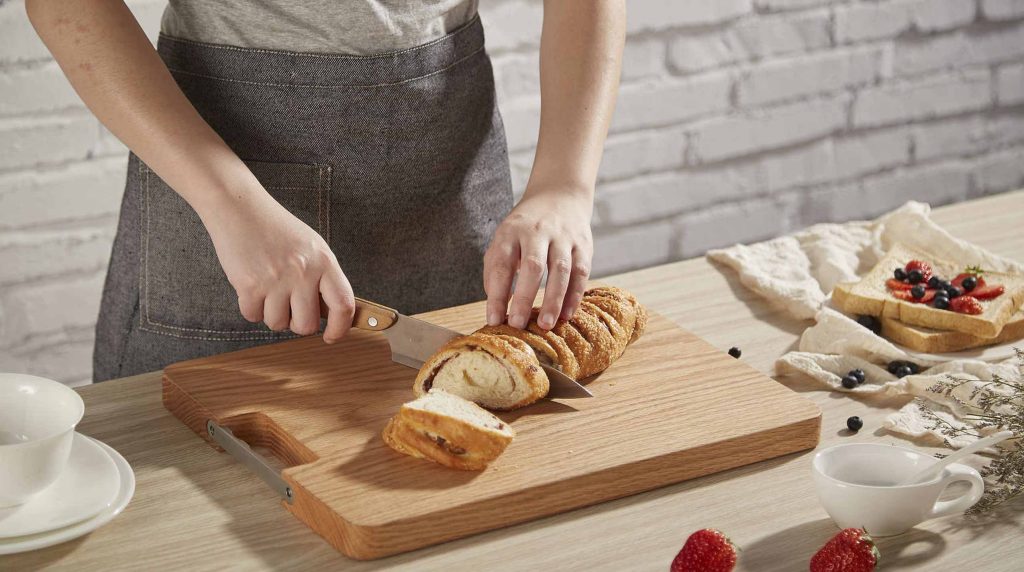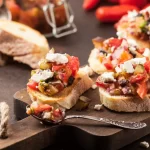Kitchen Knife Skills
Unless you’ve done time in a four-star restaurant kitchen (or obsessively watched Julie & Julia), terms like julienne and chiffonade may sound like Greek to you. That’s OK. Even recipe writers sometimes avoid these words in favor of descriptions, such as “cut into long, thin strips,” because they can sound fussy and complicated. But knowing your knife skills has its perks. Cutting straight to the chase, here are the seven most cited cutting techniques—and in some cases their code names—and what to use each one for.

How to Julienne
How to Julienne
Often called matchstick, julienne aims to create thin, sticklike shapes of your fruits and vegetables (think cucumbers, carrots, peppers, and jicama). Square off your produce by lopping off the tops and sides, then cut lengthwise into long, thin slices. Cut each of these into matchsticks, no thicker than—well, a match.
When to Julienne
Due to the delicate shape it yields, this technique is usually reserved for stir-fries, and sautés in formal French cuisine. But it can also be useful for raw fruit and vegetable preparations, such as a green papaya salad.
How to Batonnet
How to Batonnet
You’ll often see this cut called matchstick too—just a heartier kind, with the same shape as a julienne but much more heft. To do it, square off your vegetables and cut into rectangular slices, then cut into sticks, about the girth of a pencil.
When to Batonnet
This is the cut used for both French fries and vegetable sticks (in French: crudités,) for dipping in ranch or other sauces. It’s also the start of a small dice (see below).
How to Chiffonade
How to Chiffonade
Reserved for leafy greens and herbs rather than vegetables, chiffonade is meant to create super thin, papery ribbons of herbs and greens. To do it, stack all the leaves together end to end, then roll them up like a cigar. Holding with one hand, slice across the roll to create thin ribbons.
When to Chiffonade
These thin ribbons of herbs and greens are usually used for garnish or, say, sprinkling into an omelet, when you want to add flavor with minimal textural interruption.
How to Chop
How to Chop
A chop calls for large pieces of vegetables—not necessarily uniform, but roughly square. Onions, potatoes, carrots, sweet peppers, and tomatoes are often chopped.
When to Chop
A chop is appropriate for chunky stews and soups when you intend to see and experience the toothsome quality of the vegetables. Whenever the vegetables will need to cook for a fairly long time and begin to soften under heat, a rough chop should work.
How to Dice
How to Dice
Slightly smaller than a chop (sometimes called a small chop), these even pieces of vegetables, often onions, are widely called for in all styles of cooking. Make a small dice easily by slicing batonnet-cut vegetables crosswise into small cubes.
When to Dice
In sauces, omelets, chilis, and soups like minestrone, where you’re after a somewhat consistent texture, a dice is the perfect size. When in doubt, a dice will work in most recipes.
How to Brunoise
How to Brunoise
The smallest dice, yet not quite a mince, this cut is derived from julienne. Gather julienned vegetables and cut crosswise into tiny cubes.
When to Brunoise
Though you’ll rarely see this word used in a recipe outside fine French cuisine, the technique itself is generally employed when making fine sauces—no chunks or lumps—and yes, usually the French kind, like a red wine bordelaise.
How to Mince
How to Mince
The word mince commands the smallest pieces of shallot, onion, garlic, and other aromatics—or sometimes mushrooms, as with a duxelles, in which equal-sized pieces of shallots and mushrooms get sautéed in butter for exquisite, earthy flavor.
When to Mince
It’s useful in fine cuisine, or anytime you want the vegetables or aromatics to nearly disappear into a dish. Mincing is also great when using onions raw, such as in a salsa or pico de gallo, a mignonette sauce (usually made with shallots), or as a dressing.









